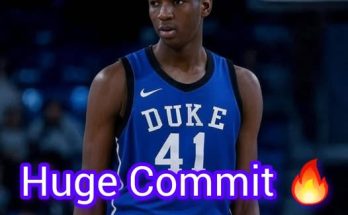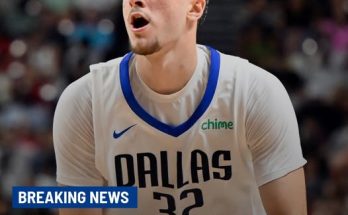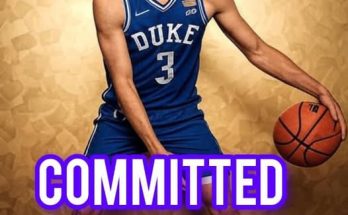In a groundbreaking and truly historic moment for collegiate athletics, the University of Oklahoma has rocked the sports world by announcing that each player on the Oklahoma Sooners softball team will receive a $25 million bonus for capturing the SEC Championship. The announcement, which came just hours after the team sealed its dominant championship victory, has sparked fiery debates, astonishment, and even celebration across the country. The move is not only unprecedented in the history of college softball but sets a dramatic new precedent for the future of NIL (Name, Image, and Likeness) compensation in collegiate sports.
This jaw-dropping payout represents the most significant financial incentive ever awarded to student-athletes in a team sport, eclipsing even the highest NIL valuations previously held by college football and basketball stars. It signals a transformative shift in the college athletics landscape—one where athletes, particularly female athletes, are finally seeing compensation that matches their cultural and competitive significance.
A Championship for the Ages
The Oklahoma Sooners softball program has long been synonymous with excellence. Under the legendary guidance of head coach Patty Gasso, the Sooners have won seven national championships and consistently field one of the most formidable teams in the nation. But this season was different—not just in dominance, but in historical consequence.
The 2025 campaign was Oklahoma’s first as a member of the Southeastern Conference, and critics initially questioned whether the Sooners could maintain their dominance against a league stacked with perennial powerhouses like Alabama, Florida, and LSU. Oklahoma didn’t just prove they belonged—they redefined dominance. The Sooners went 28-0 in SEC play, outscoring their opponents by a staggering 201 runs. Their pitching rotation was nearly untouchable, their defense airtight, and their offense relentless.
The SEC Championship Game was the cherry on top: a 9-1 mercy-rule dismantling of then-No. 2 ranked Tennessee. That victory solidified not just a title, but an era.
The Announcement That Changed Everything
Shortly after the SEC trophy was hoisted, university president Joseph Harroz Jr., flanked by athletic director Joe Castiglione and head coach Gasso, dropped the bombshell: each player on the championship roster would receive a $25 million bonus, distributed through a newly formed NIL consortium backed by a coalition of donors, sponsors, and media rights stakeholders.
“We are rewarding not just excellence, but the embodiment of what collegiate athletics can represent at its best,” Harroz said during the live-streamed press conference. “These women are champions, leaders, and trailblazers—and they deserve to be compensated as such.”
The bonuses are being issued through a sophisticated NIL model that leverages each athlete’s name, image, and likeness in promotional content, merchandise, and branded campaigns under the “Sooner Legends” initiative. According to insiders, the collective funding the payouts—known as the Boomer Elite Syndicate—includes prominent Oklahoma alumni, national corporations, and even former professional athletes.
Breaking Down the Math
At first glance, the total payout—approximately $625 million for the 25-player roster—feels surreal. But a closer look reveals a strategic investment designed to vault Oklahoma’s athletic brand into a new stratosphere. The payout is not a lump sum directly from the university but is structured through long-term licensing agreements, endorsement contracts, and NIL rights bundles.
Each player’s $25 million is comprised of:
- $10 million in guaranteed NIL income over the next 10 years.
- $5 million in equity in Sooner Legends merchandise and brand licensing.
- $3 million in direct endorsements with companies ranging from sports apparel to energy and wellness.
- $7 million placed in long-term financial trust accounts to mature over time.
Players also receive full financial literacy training, tax consultation, and investment planning as part of the deal.
Reactions from the Sports World
The shockwaves were immediate and global. Social media erupted, and major outlets from ESPN to CNN broke into programming to cover the news. Reactions ranged from praise to disbelief.
LeBron James tweeted:
“Pay these women. They EARNED it. Respect to OU for doing something this bold.”
Megan Rapinoe posted on Instagram:
“FINALLY. This is what equality in sports begins to look like.”
Conversely, some traditionalists criticized the move as a sign that college athletics has become too commercialized.
One SEC administrator, speaking anonymously, expressed concern:
“This opens a Pandora’s box. If one school can promise $25 million per player, where do we go from here? What happens to the competitive balance?”
But for many, the moment transcended dollars. It was about visibility, value, and validation.
Changing the Game for Women’s Sports
Perhaps the most profound impact of the announcement is what it means for women’s sports, particularly softball. For decades, female athletes have battled for resources, media coverage, and recognition. Now, with a deal that eclipses many men’s sports NIL deals, the Oklahoma softball team has redefined the playing field.
Jordy Bahl, a former Sooner star who transferred to Nebraska, said in a statement:
“I am beyond proud of what these women have achieved. This isn’t just about money—it’s about history.”
The NCAA and SEC have not issued formal statements but are reportedly reviewing the implications for NIL regulations, gender equity standards, and competitive policies.
Coach Gasso’s Legacy Enshrined
For Patty Gasso, already regarded as one of the greatest coaches in college sports history, this moment cements her legacy as a pioneer. She has built a culture at Oklahoma not just of winning, but of empowering young women to believe in their worth—on and off the field.
In her postgame interview, Gasso was emotional.
“When I started here 30 years ago, no one thought softball could be this big,” she said. “We had hand-me-down equipment, played in front of a few hundred fans, and now… we’re here. These young women have earned every penny of this. I hope the world takes note.”
The Recruits Are Watching
The ripple effect on recruiting is impossible to ignore. High school stars from coast to coast are now eying Oklahoma not just as a championship factory, but as the gold standard for player empowerment and financial opportunity.
Already, five-star recruits such as Kaia Lawrence from California and Morgan DeLuca from New Jersey have publicly stated their intent to commit to Oklahoma, citing the program’s “historic vision for women’s athletics.”
What’s Next?
The Sooners are now heading into the NCAA Tournament as heavy favorites to win yet another national title. But beyond the chase for another trophy lies a far greater mission: to reshape how collegiate sports operate.
There’s chatter that other elite programs—like LSU, Texas, and UCLA—are already exploring ways to replicate or compete with Oklahoma’s NIL infrastructure. Meanwhile, sports agents and NIL collectives are scrambling to understand the new market Oklahoma just created.
Congress may even weigh in. Sources indicate that legislators on both sides of the aisle are preparing to revisit NIL legislation, with Oklahoma’s move now front and center in the debate.
Final Thoughts: A Moment That Will Be Remembered Forever
This moment marks a flashpoint in American sports history. For generations, athletes—especially female athletes—have played for passion, pride, and promise. Now, the Oklahoma Sooners softball team has shown the world what happens when talent, leadership, and opportunity align.



